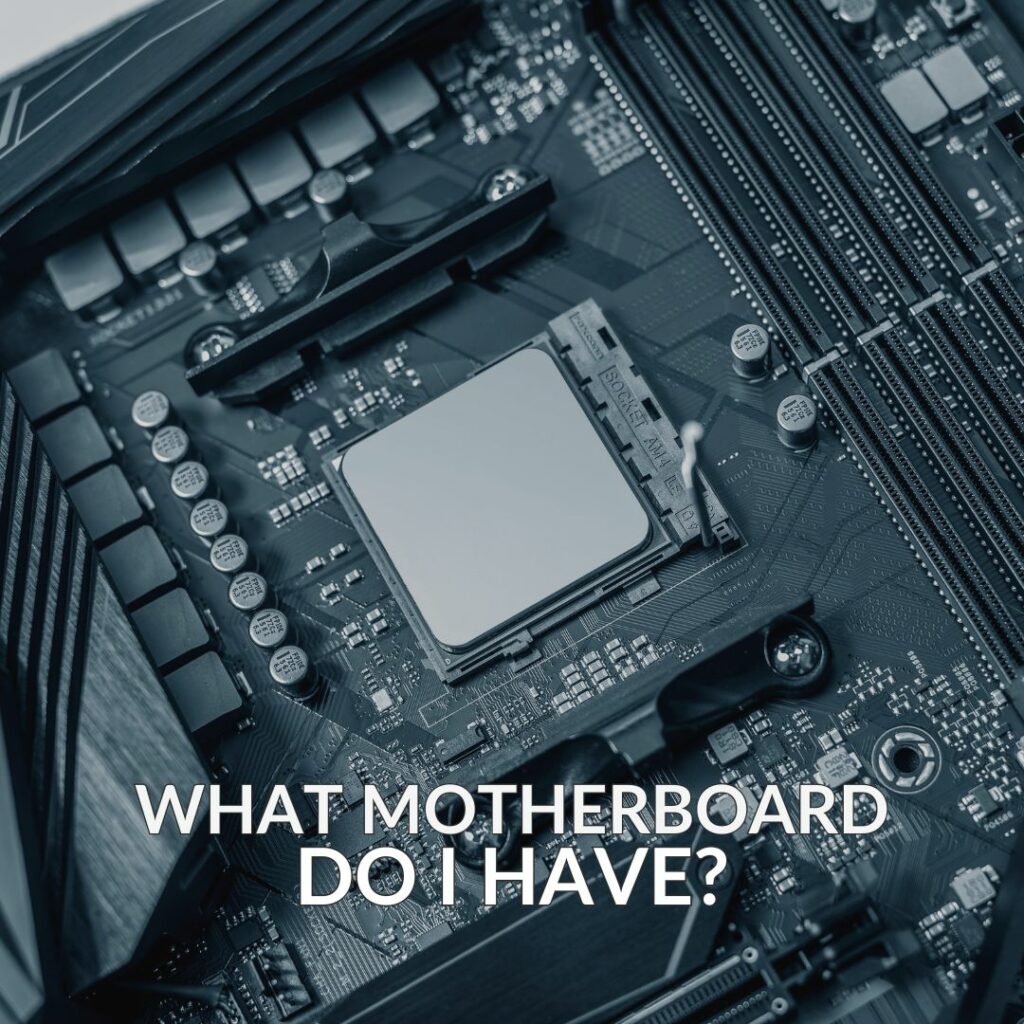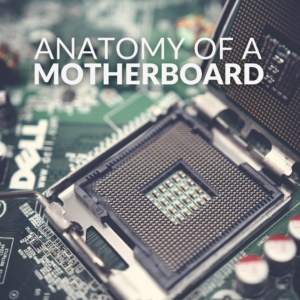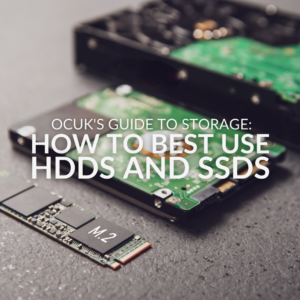Knowing what motherboard you have can be incredibly helpful when it comes to troubleshooting, PC upgrades, or even installing new drivers.
You don’t have to take your entire computer apart to find out the information you need. Thankfully, there are handy built-in tools and easy-to-use third-party applications that can help you find out what motherboard you have installed. All of which we cover in this blog post, so let’s jump straight to it!

What is a Motherboard?
Before we go into the how’s, let’s cover the what’s. What exactly is a motherboard?
Your motherboard is at the centre of your gaming PC. It is responsible for connecting all the other various components together, allowing them to seamlessly communicate.

There are several crucial factors that you need to consider when it comes to your motherboard. This includes its chipset, socket, RAM standard, and form factor.
Chipset
Your motherboard chipset and CPU go hand in hand. It determines what components you can use, how much RAM, and how many USB ports you’ll have. Chipsets differ between both Intel and AMD motherboards.
Socket
The CPU socket consists of a series of pins to connect the processor to the motherboard. Your motherboard’s CPU socket isn’t universal, therefore it won’t work with every processor available.
In fact, it all depends on the CPU grid array. The two types of CPU socket include:
- Land Grid Array (LGA) – E.g. Intel LGA 1700 socket
- Pin Grid Array (PGA) – E.g. AMD AM4 socket

RAM Standard
There are multiple different RAM standards, the most common being DDR4 and DDR5. Your motherboard will be compatible with one of these.
Form Factor
Motherboards typically feature all the same core components, but you can find models in a range of form factors to suit every type of PC case. The four primary form factors include:
- Mini-ITX
- Micro-ATX
- ATX
- E-ATX
Want to know about the individual components that make up your motherboard? Our ‘Anatomy Of’ series has a dedicated article in which we take a closer look at all the components of a motherboard.

How to Find Out Which Motherboard You Have
Built-in Windows Tools
First up, you can check in your PC’s ‘System Information’ Panel. To do this simply, go into Start > Windows Tools > System Information.

To find out what motherboard you have, look at the drop-down list of hardware until you find ‘BaseBoard Manufacturer’ and ‘BaseBoard Product’. The manufacturer is who has made your motherboard, and the product is its name. For example, I have an ASUS ROG Strix B550-A Gaming Motherboard.
Third-Party Software
Alternatively, you can also use third-party software such as Speccy.
With Speccy, you’ll be able to see a complete rundown of all the hardware you currently have installed within your PC. This includes your motherboard, CPU, RAM, GPU, and more.

Finding out your current PC specs doesn’t have to be a challenge. We’ve put together a dedicated guide on how to check your PC specification.

If All Else Fails…Check Your Motherboard Itself
Still struggling to find out what motherboard you have? Have you checked the motherboard itself? Some models will have their name and/or manufacturer printed somewhere on the board.
However, for those with a gaming laptop, this isn’t really an option as opening up the case could void your warranty.
Do You Need to Upgrade Your Motherboard If…
Your motherboard is a crucial component of your PC. You won’t be able to upgrade other pieces of hardware without making sure that they are compatible with your motherboard first.
You Want to Upgrade Your CPU
If you want to upgrade your processor, you’ll need to ensure that your motherboard includes a compatible CPU socket. For example, the latest gen of AMD Ryzen 7000 Series CPU requires an AM5 socket. If you don’t have a motherboard with an AM5 socket, you won’t be able to utilise your new shiny processor.
You Want to Upgrade Your RAM
Similar to your CPU, you’ll need to check that your motherboard is compatible with your chosen RAM standard. For example, for DDR5 RAM you need a motherboard that supports DDR5.
You Want to Upgrade Your Storage
Are you looking to upgrade to an M.2 SSD? Or perhaps you want to boost your capacity with even more M.2 drives? Whatever the case, you need to ensure that your motherboard includes a compatible M.2 slot. You might also want to make a note of how many M.2 slots it has for any further upgrades.
Does your motherboard not include an M.2 slot? Fear not, there are still plenty of high-quality storage solutions that you can utilise for all your games, creative projects, and more. Our guide to storage takes you through all of these to help you pick the best one for your set-up.

Looking to Upgrade?
Looking to upgrade your motherboard? Our pre-built bundles come equipped with everything you need including a high-end motherboard, CPU, RAM, and CPU cooler. Best of all, these upgrade bundles have been approved by overclocking legend, 8Pack. What more could you want?
Alternatively, you can shop all our AMD and Intel motherboards by clicking the buttons below.
ASUS Crosshair X670E Hero and AMD Ryzen 9 7950X3D 8Pack Approved Bundle
- 8Pack approved bundle
- Includes an ASUS Crosshair X670E Hero and overclocked AMD Ryzen 9 7950X3D CPU
- Up to 64GB DDR5 RAM
- Choice of AiO or CPU block


ASUS ROG Z890 and Intel Core Ultra 9 8Pack Approved Bundle
- 8Pack approved bundle
- Includes an ASUS ROG Z890 ATX Motherboard and overclocked Intel Core Ultra 9 285K
- Up to 64GB DDR5 RAM
- Choice of 360mm AiO CPU cooler
What Motherboard Do You Have?
Did you find out what motherboard you have? Tell us in the comments below!
